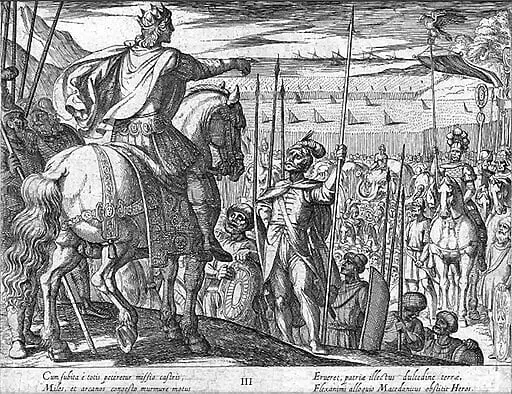Alexander the Great, the king of Macedon, was one of the greatest military commanders in history. He conquered much of the known world by the age of 32, but his Indian expedition was the most tumultuous of all. He crossed the Indus River in 327 BC and fought many battles against the Indian kings, but his army was eventually worn down and prevented from proceeding further. Despite this, Alexander’s Indian campaign remains a significant turning point in world history and offers great insights into the ancient Indian subcontinent. Here are the top reasons why retracing Alexander’s footsteps is important today.
A Historic Turning Point
Alexander’s Indian expedition marked a significant turning point in the history of India. The Indian subcontinent had never faced such a powerful military force before, and Alexander’s campaign revealed the vulnerabilities of the Indian states. Alexander’s armies were known for their tactical brilliance and their use of new weapons and tactics, which the Indians had never seen before. The Indian states learned from this expedition and improved their military capabilities, setting the stage for the rise of the Maurya Empire under Chandragupta Maurya.
Had a profound impact on the cultures of India and Greece. Alexander brought Greek culture to India, and the fusion of the two cultures resulted in the emergence of a unique Hellenistic culture. This cultural exchange was not one-sided, as Alexander’s army also imbibed elements of Indian culture, such as yoga, meditation, and the concept of ahimsa.
Top Reasons to Retrace Alexander’s Footsteps Today
Retracing Alexander’s footsteps can offer great insights into the ancient Indian subcontinent. The ruins of the ancient cities Alexander visited, such as Taxila and Sialkot, offer a glimpse into the ancient Indian way of life. These ruins are also a testament to the architectural and engineering prowess of the ancient Indians.
Revealed the extent of the Hellenistic influence on Indian culture. The ancient Buddhist city of Taxila was one of the centers of Hellenistic learning, and many Greek philosophers and scholars visited the city to study and teach. The ancient stupa at Taxila also features Hellenistic elements, such as the depiction of the Greek mythological figure of Atlas.
His Indian campaign revealed the strengths and weaknesses of the Indian military, and retracing his footsteps can offer insights into the military tactics and strategies of the ancient Indians.
His interactions with the Indian sages and philosophers offer insights into the ancient Indian concepts of spirituality and religion. His encounter with the ascetic philosopher Dandamis, who refused to submit to him, offers a particularly interesting insight into the ancient Indian concept of ahimsa.
Opened up new trade routes between India and the rest of the world, and retracing his footsteps can reveal the extent of the ancient Indian trade networks.
This campaign revealed the fragmented nature of the ancient Indian states, and the subsequent rise of the Maurya Empire under Chandragupta Maurya was a direct result of the lessons learned from Alexander’s campaign.
The fusion of Greek and Indian styles resulted in the emergence of a unique Hellenistic style of art and architecture, and retracing Alexander’s footsteps can reveal the extent of this influence.
Alexander’s interactions with the Indian sages and philosophers offer insights into the ancient Indian languages and scripts, and the translation of the ancient Indian texts into Greek by the scholars of Taxila was a significant achievement.
Image credit
Antonio Tempesta, Public domain, via Wikimedia Commons
